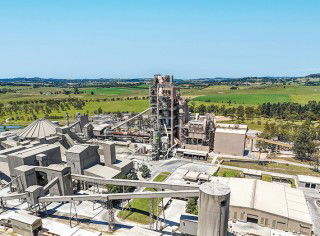Challenging market conditions persist for Australia's cement sector due to weak residential and commercial activity combined with the potential impact of a new carbon tax which became effective last month.
Last year saw a decline in housing starts as rising interest rates coincided with the end of stimulus packages. In November 2011, the Reserve Bank cut interest rates by 25bp to spur the market into recovery although it was unable to stop further declines in financing approvals. Latest data from Australia's Bureau of Statistics (ABS) shows that construction on new homes and units slumped 1.9 per cent during the June 2012 quarter – its lowest level in a decade. New residential building work fell 2.5 per cent compared to the previous quarter while alterations and additions were down 2.3 per cent.
The ABS data also showed a 1.2 per cent drop in non-residential building QoQ. Engineering construction, which includes the mining sector, fared better with total output value rising 0.9 per cent. However, the rate of growth in that sector was substantially lower than the 15.1 per cent increase recorded in the March quarter. Overall, the total value of construction output slipped 0.2 per cent in the quarter, well below economists' forecast of a 1.9 per cent rise.
Despite a difficult operating environment, Adelaide Brighton posted a 9.8 per cent rise in 1H12 net profit to A$67.5m as it said demand from the mining sector offset the weak residential and commercial sectors. Cement sales increased marginally as a result of strong demand from resources and mining in Western Australia and the Northern Territory. Looking ahead, the company sees a modest rise in annual net profit of 4.4 per cent, subject "to the timing of cement sales to major projects and if market conditions are sustained during the second half of 2012," managing director, Mark Chellew said.
Boral, meanwhile, reported a 5.3 per cent rise in full year profit to the end of 30 June 2012 of A$101m which was at the lower end of Boral's forecast due to a property sale falling through. The company, which earns about 80 per cent of its revenue in Australia, had twice downgraded its earnings for the year. Second half net profit fell 59 per cent YoY to A$34.2m from A$83m a year earlier. Chief executive Ross Batstone said: "Earnings from our Australian business in the six months to June were hit by very weak housing and non-residential building activity, combined with delays and disruption from sustained rainfall across the east coast. The positive impact of price increases was more than offset by much weaker sales volumes into these markets and by higher costs, including from the wet weather."
In response to weak domestic demand producers have been making a number of cutbacks and have stepped up cost-saving measures. Boral has made permanent and temporary capacity closures in its brick and roof tile businesses and has confirmed that it is in the midst of reducing its building products workforce by a quarter, with 800 employees and 150 contractors to be cut. Meanwhile, last year Cement Australia (part of the Holcim Group) decommissioned its 0.3Mta Kandos plant, partly due the forecasted effects of the carbon tax, which was officially introduced on 1 July 2012.
This new tax is of great concern to the domestic cement sector, which is implementing measures to reduce its carbon footprint. Adelaide Brighton, for example, has increased the use of supplementary cementitious materials and alternative fuels, has closed inefficient clinker plants, and has been developing its capability to meet demand via imports. While not directly impacting first half 2012 earnings, the company estimates that the carbon tax will have a negative impact on net profit of approximately A$2.7m in the second half. The industry has also warned that the combined effects of the carbon tax, increased domestic transport costs and the strong Australian dollar could expose the industry to the threat of lower cost imports.
While Boral has declined to give forecasts for its fiscal year 2013 due to uncertain market conditions, Adelaide Brighton sees total 2012 cement and clinker sales volumes to be similar to 2011. In terms of the construction sector, although the government has made subsequent interest rate cuts since November 2011, it may take some months before it flows through to a positive reading for the housing sector. Activity may be slow until the end of the year as building approvals tend to lead housing starts by 3-6 months. In other segments, the Construction Forecasting Council (CFC) estimates the value of engineering works to increase 12.3 per cent this year and 13.7 per cent in FY13 but that growth would moderate from FY14. Spending in heavy industry and mining is expected to account for 36 per cent of all engineering construction spend in 2012.

Boral trials Australia’s first carbon-captured concrete
Boral Ltd has successfully produced concrete using recycled concrete aggregates recarbonated ...